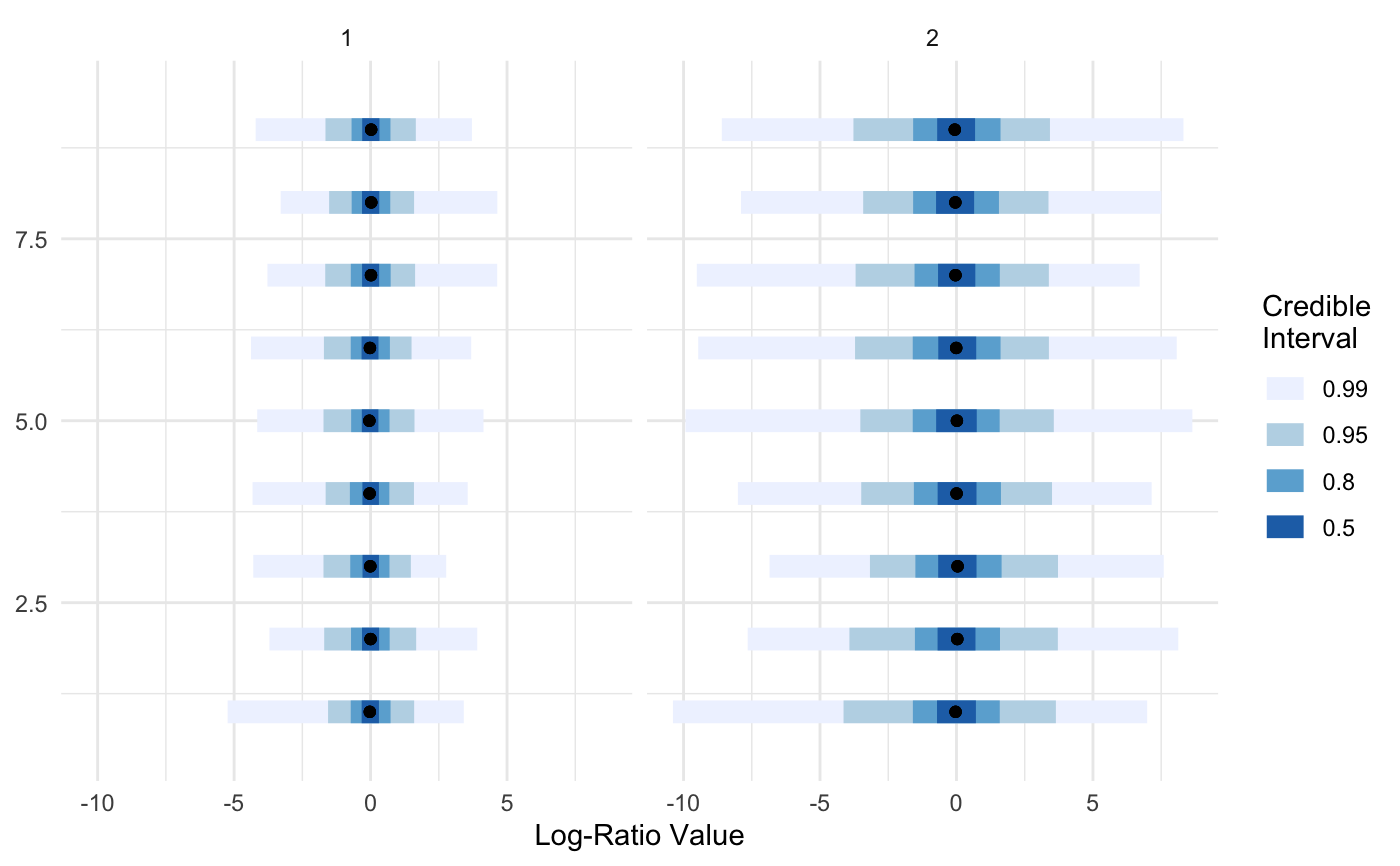Sample from the prior distribution of pibblefit object
sample_prior.pibblefit.RdNote this can be used to sample from prior and then predict can
be called to get counts or LambdaX (predict.pibblefit)
# S3 method for pibblefit sample_prior(m, n_samples = 2000L, pars = c("Eta", "Lambda", "Sigma"), use_names = TRUE, ...)
Arguments
| m | object of class pibblefit |
|---|---|
| n_samples | number of samples to produce |
| pars | parameters to sample |
| use_names | should names be used if available |
| ... | currently ignored |
Details
Could be greatly speed up in the future if needed by sampling directly from cholesky form of inverse wishart (currently implemented as header in this library - see MatDist.h).
Examples
# Sample prior of already fitted pibblefit object sim <- pibble_sim() attach(sim) fit <- pibble(Y, X) sample_prior(fit)#> pibblefit Object (Priors Only): #> Number of Samples: 30 #> Number of Categories: 10 #> Number of Covariates: 2 #> Number of Posterior Samples: 2000 #> Contains Samples of Parameters:Eta Lambda Sigma #> Coordinate System: alr, reference category: 10 [c10]# Sample prior as part of model fitting m <- pibblefit(N=as.integer(sim$N), D=as.integer(sim$D), Q=as.integer(sim$Q), iter=2000L, upsilon=upsilon, Xi=Xi, Gamma=Gamma, Theta=Theta, X=X, coord_system="alr", alr_base=D) m <- sample_prior(m) plot(m) # plot prior distribution (defaults to parameter Lambda)
